-
 Bitcoin
Bitcoin $119100
-2.16% -
 Ethereum
Ethereum $4300
-0.31% -
 XRP
XRP $3.171
-2.99% -
 Tether USDt
Tether USDt $1.000
-0.01% -
 BNB
BNB $814.1
-1.33% -
 Solana
Solana $176.5
-4.67% -
 USDC
USDC $0.0000
0.00% -
 Dogecoin
Dogecoin $0.2267
-5.83% -
 TRON
TRON $0.3465
2.15% -
 Cardano
Cardano $0.7870
-4.98% -
 Chainlink
Chainlink $21.66
-2.27% -
 Hyperliquid
Hyperliquid $43.89
-4.62% -
 Stellar
Stellar $0.4414
-3.35% -
 Sui
Sui $3.707
-6.73% -
 Bitcoin Cash
Bitcoin Cash $599.1
3.73% -
 Hedera
Hedera $0.2504
-6.96% -
 Ethena USDe
Ethena USDe $1.001
-0.01% -
 Avalanche
Avalanche $23.21
-4.99% -
 Litecoin
Litecoin $121.1
-3.55% -
 Toncoin
Toncoin $3.415
0.45% -
 UNUS SED LEO
UNUS SED LEO $9.002
-1.24% -
 Shiba Inu
Shiba Inu $0.00001314
-5.43% -
 Uniswap
Uniswap $11.45
1.63% -
 Polkadot
Polkadot $3.926
-5.37% -
 Cronos
Cronos $0.1694
1.63% -
 Ethena
Ethena $0.8117
-2.35% -
 Dai
Dai $1.000
0.00% -
 Bitget Token
Bitget Token $4.422
-1.43% -
 Monero
Monero $264.2
-0.83% -
 Pepe
Pepe $0.00001137
-8.29%
What is the difference between USDC and other stablecoins
USDC, unlike many other stablecoins, primarily uses US dollars and short-term Treasuries for its 1:1 backing, offering greater transparency through regular audits, unlike algorithmic or less transparent alternatives.
Mar 12, 2025 at 02:55 am
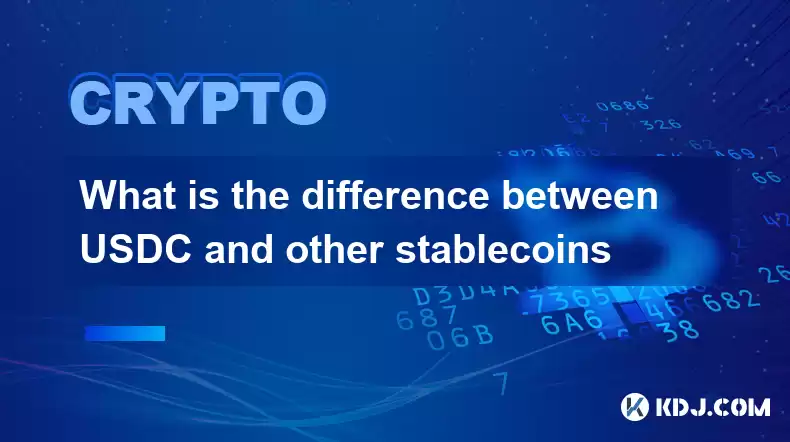
Key Points:
- USDC's backing mechanism differs from other stablecoins, primarily focusing on a 1:1 reserve of US dollars and short-term US Treasury securities.
- Algorithmic stablecoins rely on complex algorithms and often sister tokens to maintain their peg, making them inherently riskier.
- Other fiat-collateralized stablecoins may use a variety of assets, potentially including less liquid or riskier securities than USDC.
- Transparency and auditing play a crucial role in differentiating USDC's approach from others, impacting trust and stability.
- Differences in governance and the entities behind stablecoins influence their regulatory landscape and overall stability.
What is the difference between USDC and other stablecoins?
The cryptocurrency market offers a variety of stablecoins, each designed to maintain a relatively stable value, typically pegged to the US dollar. However, significant differences exist in their underlying mechanisms, impacting their stability, transparency, and risk profiles. Understanding these distinctions is crucial for investors navigating the volatile crypto landscape. USDC, issued by Circle, stands out among its competitors due to its specific approach to maintaining its peg.
One major difference lies in the backing mechanism. USDC boasts a reserve primarily composed of US dollars and short-term US Treasury securities. This approach aims for a direct and readily liquid backing, theoretically ensuring that each USDC token can be redeemed for one US dollar. This contrasts sharply with other stablecoins.
Algorithmic stablecoins, for example, attempt to maintain their peg through complex algorithms and often involve a sister token. These algorithms often rely on supply and demand dynamics, making them inherently susceptible to market manipulation and volatility. Their stability is far less certain compared to USDC’s reserve-backed model. A sudden influx of sell orders, for example, could potentially disrupt the algorithm's ability to maintain the peg, leading to a de-pegging event.
Many other fiat-collateralized stablecoins also exist, but their reserves may include a wider range of assets than USDC's more conservative approach. Some might include corporate bonds, commercial paper, or other less liquid assets. The inclusion of such assets increases the risk profile of the stablecoin, as the value of these underlying assets can fluctuate, potentially jeopardizing the 1:1 peg. USDC's focus on high-quality, liquid assets aims to minimize this risk.
Transparency and regular audits are another critical differentiator. Circle, the issuer of USDC, publishes regular attestations from independent accounting firms, providing evidence of the reserves backing the circulating supply of USDC. This level of transparency is not consistently matched across other stablecoins. Some lack the same level of public reporting, making it difficult to verify the actual composition of their reserves and potentially increasing counterparty risk. The lack of transparency can erode investor confidence and increase the uncertainty surrounding the stablecoin's long-term stability.
Governance structures also vary significantly between USDC and its counterparts. USDC's governance is centralized, residing primarily with Circle. This structure offers a clear line of accountability, although it also presents potential risks associated with centralized control. Decentralized stablecoins, on the other hand, aim for community-driven governance, potentially introducing complexities and slower decision-making processes. The implications of these different structures are profound, impacting how quickly the stablecoin can respond to market events and regulatory changes.
The regulatory landscape surrounding stablecoins is still evolving, with significant differences emerging based on the characteristics of each coin. USDC, due to its structure and the transparency of its operations, may be subject to a different regulatory scrutiny than algorithmic or less transparent stablecoins. This regulatory uncertainty is a critical risk factor for all stablecoins, but the level of risk can vary depending on the design and operations of each project. Understanding these regulatory considerations is paramount for both investors and issuers.
The choice of a stablecoin hinges on an investor's risk tolerance and understanding of the underlying mechanisms. While USDC aims for stability through its reserve-backed model and transparent auditing, other stablecoins present different risk-reward profiles. Careful consideration of these differences is essential for making informed investment decisions within the cryptocurrency space.
Frequently Asked Questions:
Q: Is USDC truly backed 1:1 by the US dollar?
A: While Circle aims for a 1:1 backing, the published attestations show the reserve composition, primarily consisting of US dollars and short-term US Treasury securities. However, this does not guarantee a perfect 1:1 redemption at all times, and market conditions could theoretically impact the ability to redeem immediately at the stated peg.
Q: What are the risks associated with investing in USDC?
A: While considered relatively safer than other stablecoins, risks remain. These include counterparty risk (Circle's financial stability), regulatory risk (changes in regulations affecting stablecoins), and operational risk (potential errors or vulnerabilities in Circle's systems).
Q: How does USDC compare to Tether (USDT)?
A: USDT's backing mechanism has faced significant scrutiny and questions regarding its transparency. USDC, through its regular attestations, aims for greater transparency, although both are subject to regulatory and counterparty risks. The key difference lies in the level of public information and the perceived level of trust in the reserves backing each stablecoin.
Q: Are all stablecoins created equally?
A: Absolutely not. Stablecoins employ vastly different mechanisms to maintain their peg, ranging from reserve-backed models (like USDC) to algorithmic approaches. Each approach carries its own set of risks and benefits, requiring careful evaluation before investing.
Q: Can I lose money investing in USDC?
A: While designed to maintain a stable 1:1 peg with the USD, the possibility of de-pegging, although considered unlikely by many, still exists due to various factors like regulatory actions, operational failures, or extreme market events. No investment is entirely without risk.
Q: What is the difference between collateralized and algorithmic stablecoins?
A: Collateralized stablecoins, like USDC, are backed by reserves of assets, typically aiming for a 1:1 ratio with the pegged currency. Algorithmic stablecoins utilize algorithms and often sister tokens to maintain their peg, making them generally more volatile and riskier than collateralized stablecoins.
Disclaimer:info@kdj.com
The information provided is not trading advice. kdj.com does not assume any responsibility for any investments made based on the information provided in this article. Cryptocurrencies are highly volatile and it is highly recommended that you invest with caution after thorough research!
If you believe that the content used on this website infringes your copyright, please contact us immediately (info@kdj.com) and we will delete it promptly.
- Ethereum Layer-2 Scaling Competition Heats Up as ETH Breaks $4K
- 2025-08-12 10:30:12
- Meme Coins, Investment, and Token Burns: What's Hot in 2025?
- 2025-08-12 10:30:12
- BlockDAG, Chainlink, Hedera: The Cryptos Enterprises are Eyeing
- 2025-08-12 09:30:12
- Dogecoin's Wild Ride: Big Holders, Price Push, and What's Next for the Meme Coin
- 2025-08-12 08:30:12
- Coin Master Board Adventure: Free Energy and the Thrill of the Board
- 2025-08-12 08:50:12
- Bitcoin to $133,000? Here's What the Experts Are Saying
- 2025-08-12 08:30:12
Related knowledge
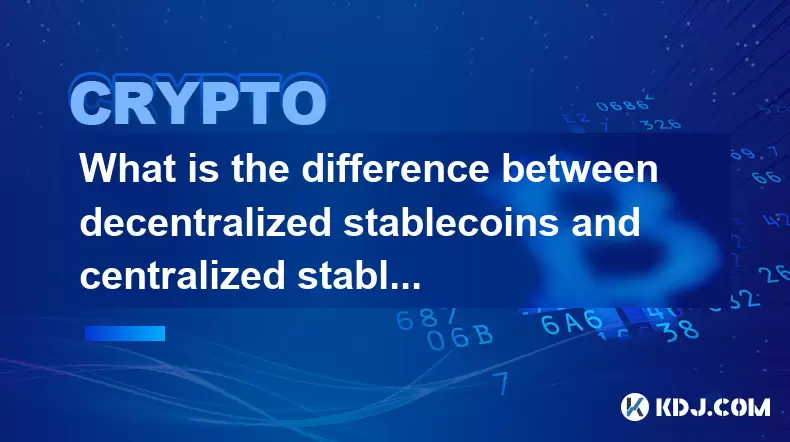
What is the difference between decentralized stablecoins and centralized stablecoins? Pros and cons comparison
Jun 15,2025 at 09:42am
What Are Stablecoins and Why Do They Matter?Stablecoins are a category of cryptocurrencies designed to maintain a stable value, usually pegged to an e...
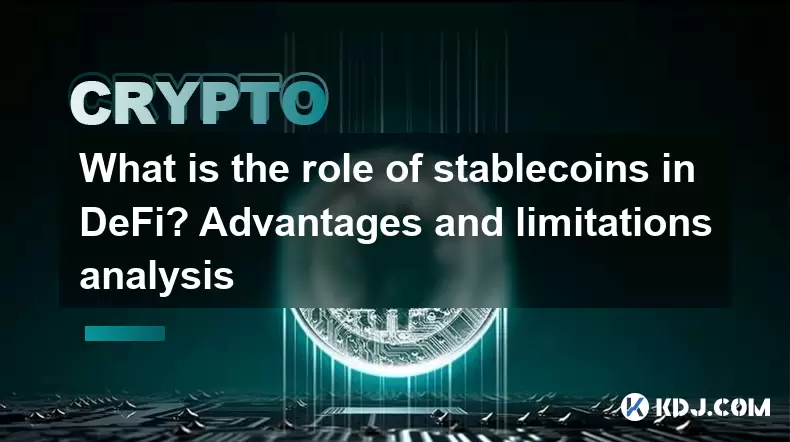
What is the role of stablecoins in DeFi? Advantages and limitations analysis
Jun 14,2025 at 06:28am
Understanding Stablecoins in the DeFi EcosystemStablecoins play a pivotal role in the decentralized finance (DeFi) landscape by providing a bridge bet...

How do algorithmic stablecoins work? Potential risks and market impact
Jun 12,2025 at 02:07pm
Understanding Algorithmic StablecoinsAlgorithmic stablecoins are a type of cryptocurrency designed to maintain a stable value relative to a specific a...

How do stablecoins anchor legal currencies? Technical and economic model analysis
Jun 16,2025 at 08:43am
Understanding the Concept of StablecoinsStablecoins are a category of cryptocurrencies designed to maintain a stable value relative to a specific asse...
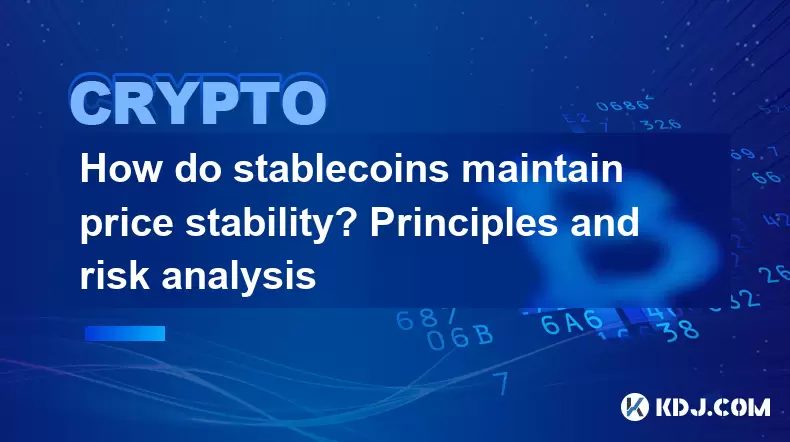
How do stablecoins maintain price stability? Principles and risk analysis
Jun 11,2025 at 12:01am
Understanding the Mechanisms Behind Stablecoin StabilityStablecoins are a category of cryptocurrencies designed to minimize price volatility, often pe...
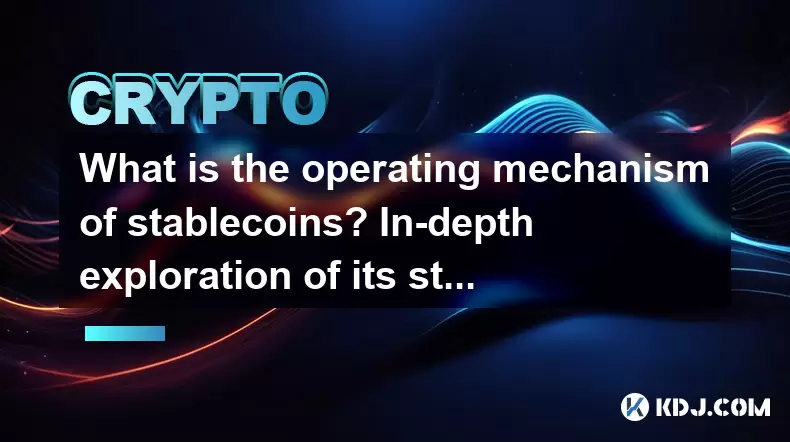
What is the operating mechanism of stablecoins? In-depth exploration of its stability principle
Jun 10,2025 at 09:28pm
Understanding the Core Concept of StablecoinsStablecoins are a unique category within the cryptocurrency market, designed to address one of the most s...

What is the difference between decentralized stablecoins and centralized stablecoins? Pros and cons comparison
Jun 15,2025 at 09:42am
What Are Stablecoins and Why Do They Matter?Stablecoins are a category of cryptocurrencies designed to maintain a stable value, usually pegged to an e...

What is the role of stablecoins in DeFi? Advantages and limitations analysis
Jun 14,2025 at 06:28am
Understanding Stablecoins in the DeFi EcosystemStablecoins play a pivotal role in the decentralized finance (DeFi) landscape by providing a bridge bet...

How do algorithmic stablecoins work? Potential risks and market impact
Jun 12,2025 at 02:07pm
Understanding Algorithmic StablecoinsAlgorithmic stablecoins are a type of cryptocurrency designed to maintain a stable value relative to a specific a...

How do stablecoins anchor legal currencies? Technical and economic model analysis
Jun 16,2025 at 08:43am
Understanding the Concept of StablecoinsStablecoins are a category of cryptocurrencies designed to maintain a stable value relative to a specific asse...

How do stablecoins maintain price stability? Principles and risk analysis
Jun 11,2025 at 12:01am
Understanding the Mechanisms Behind Stablecoin StabilityStablecoins are a category of cryptocurrencies designed to minimize price volatility, often pe...

What is the operating mechanism of stablecoins? In-depth exploration of its stability principle
Jun 10,2025 at 09:28pm
Understanding the Core Concept of StablecoinsStablecoins are a unique category within the cryptocurrency market, designed to address one of the most s...
See all articles

























































































